Given the response and discussion around last week’s post on the D600, I invited pal Ben Pitt back to share another hands on review of a camera that has been competing for eyeballs: the GH3. Since the introduction of the Lumix DMC-GH1 back in 2009, the GH-series’ has been gobbling up mindshare for photographers looking for some great technology in a tightly sized and affordable package. I’m a big ol’ fan of the mirrorless category of cameras of late…seems that all the manufacturers are making massive leaps to give us astounding quality in small packages (I’m currently playing with the Olympus OM-D EM-5 and loving it…and did a run-down on the mirrorless category — Sony, Olympus, Panasonic, Leica, Fuji — a few weeks ago here). But now, let’s let Ben do a deep dive on the Panasonic GH3 below. Take it away… -Chase
Thanks Chase. Panasonic has long been the maverick outsider of digital cameras – consumers have long been not quite sure where it fits into their lexicon – but with the GH3 it looks like it’s lining up to join the establishment. Reviewers have been falling over each other to heap praise on this camera, and it’s easy to see why.
The GH3 is bristling with the right sockets, buttons, levers and dials, an articulated screen and a large, high-resolution electronic viewfinder. Autofocus is startlingly quick, and being able to place the autofocus point anywhere in the frame via the touchscreen is a major advantage that conventional SLRs can’t match. There’s 4fps burst shooting with continuous autofocus, rising to 5.6fps with fixed focus, and a large buffer for sustained quick-fire operation. A PC sync socket and optional battery grip demonstrate that this is a reasonably serious photographer’s tool.
Image quality is a big improvement over previous Panasonic Micro Four Thirds cameras, and broadly on a par with the Nikon D7000 for noise and details. However, it’s the video mode that really shines. Its videos are incredibly sharp, and there’s less moiré interference than from Canon and Nikon’s SLRs. They can’t match the GH3’s smooth video autofocus, either. With full exposure control while recording, bit rates up to 72Mbit/s and frame rates up to 60p (50p in Europe), nothing else at this price comes close for video.
Nothing, that is, except its predecessor, the GH2. The GH3 makes big strides for photo quality and ergonomics, but a lot of reviewers have found that improvements in video quality compared to the GH2 are relatively subtle. That’s not a criticism of the GH3 but praise for the GH2, which has been a big hit among independent filmmakers.
I’ve been using the original GH1 since June 2009. I’ve reviewed a wide range of cameras since then, but I haven’t used anything that has tempted me to upgrade. Admittedly, the GH1 is showing its age for photo quality, particularly for noise levels. But for video, it’s very similar to the GH2 and more capable than anything else I’ve used.
However, I’ve recently been shooting with the GH3 (on loan from Panasonic), and I’m seriously tempted to upgrade. But then, the GH3 costs around $1,300 (€1,200, £1,200) and the GH1 is only fetching around $250 (€200, £170) on eBay.
That got me thinking… the GH1 is currently a phenomenal bargain for video producers. Glass tends to keep its value much longer than cameras, so are video producers who are considering the GH3 better off picking up a GH1 and spending the rest on lenses? And should I stop pining over the latest model and be content with what I’ve got?
Frustratingly, the answer isn’t as clear cut as I’d hoped.
In many of my tests, the GH1 and GH3’s videos were hard to tell apart. The GH3 had a slight advantage for sharpness and its colours were a little punchier, but there wasn’t much in it. Here’s a frame from each camera’s 1080p output, split into three to show the GH3, GH1 and Sony’s NEX-5N – another excellent camera for video, but clearly trailing here for sharpness and colour response (click the image to enlarge it and type F to expand to actual size).
Next, here’s the GH1 and GH3 again, this time set to minimum contrast in an attempt to capture as much dynamic range as possible. Both cameras excel for detail but neither of them have managed to capture anything in this over-exposed sky. Having said that, the GH1’s murky grey sky isn’t much to look at – I’d prefer to settle for the GH3’s bleached out white.
The GH1’s handling of skin tones has always bugged me, with a strange habit of vein-like bands of desaturated colours along the edge of highlighted areas. It’s pretty subtle, but having noticed it, I keep spotting it again and again. It’s just about visible in the example below, but there was no sign of it in the GH3’s output. Otherwise, there’s not much to choose between them here. If anything, the GH1’s colours are generally more flattering and noise is less pronounced.
The GH3 really starts to prove its worth in this high-contrast shot. The sky is well exposed in both cameras’ output but the GH3 has captured lots more detail in the gloomy foreground.
Boosting the shadows in editing software shows just how much more detail there is in the GH3’s output. There’s no contest.
Finally, here’s one more example, with the Nikon D600 thrown in for good measure. The D600 trails slightly for detail in the rushes at the bottom of the frame. However, the GH1’s lack of detail in the dark trees on the other side of the lake brings it to third place here. Then again, I wouldn’t consider the D600 for video because of its moiré problems, fixed aperture while recording and lousy video autofocus.
So what’s it to be? I think it’s clear that the GH3 is worth the extra for those who want the best. No other mirrorless or SLR camera can touch it for video quality. As for me, I think I’ll stick with the GH1 for now. It may struggle in high-contrast scenes but it still packs an incredible bang for its buck. And that new Panasonic 12-35mm f/2.8 lens is pretty tempting too.
You can buy the GH3 at B&H Photo here
You can rent the GH3 at Borrowlenses.com here


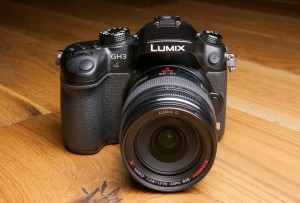
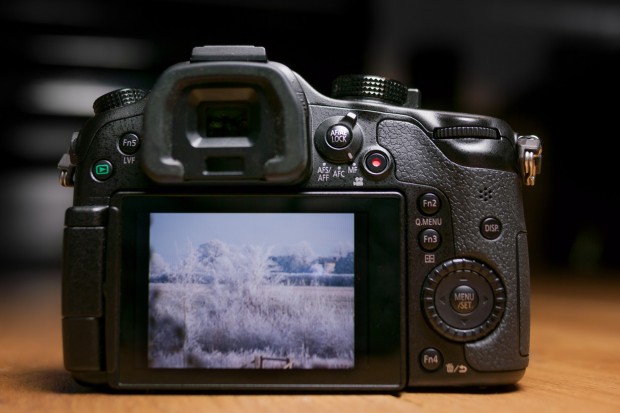
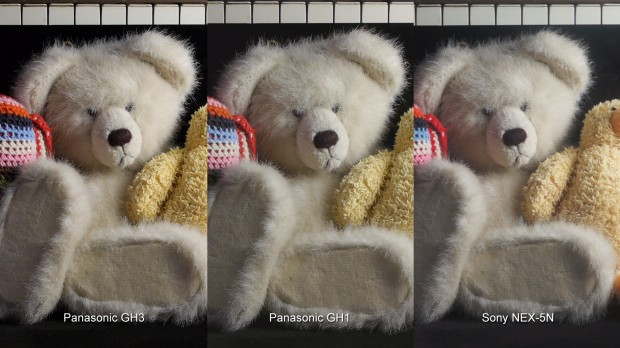
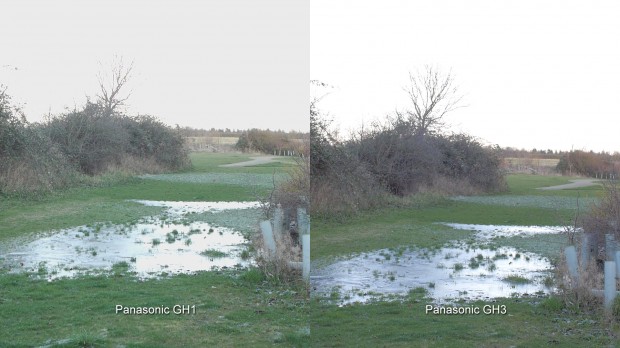
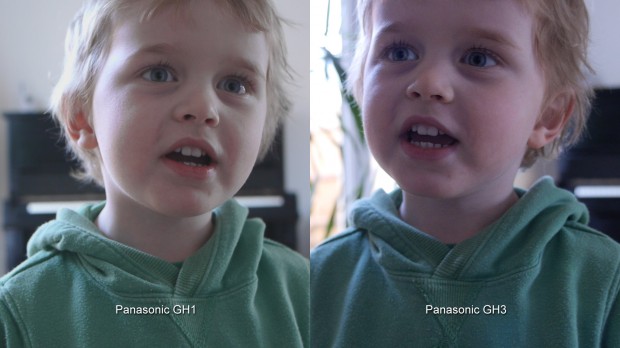
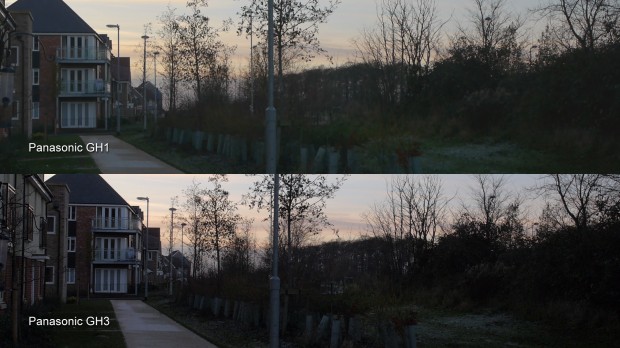
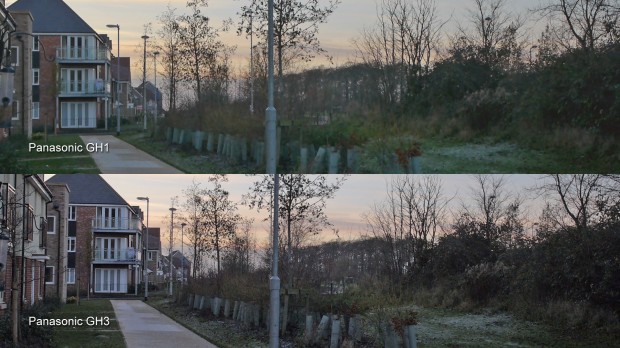
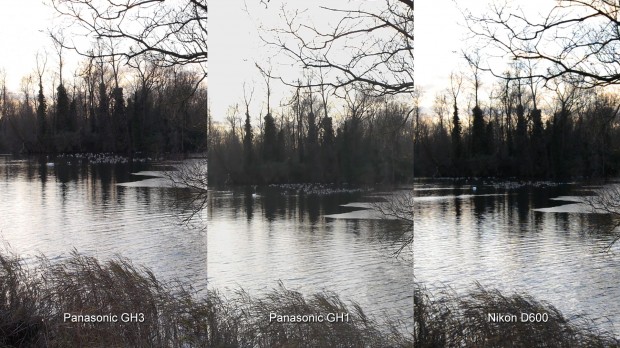
















Some reviewers have said the hacked GH2 has higher actual resolution than a 5DmkIII and D800 and is comparable to Canon’s C300. I was hoping you’d cover that when reviewing the GH3 🙁
Also, what moire problems w/ the D600? The GH1-3 don’t have moire? And how’s the jello shutter?
This isn’t a full review, hence why I’ve concentrated on comparing the GH3 and GH1. I didn’t have the 5D Mark III in for testing at the same time as the GH3 so I couldn’t make side-by-side comparisons, but when I reviewed the 5D Mark III a few months ago, I found that it lagged behind the GH1 and Nikon D800 for detail in videos – see http://www.expertreviews.co.uk/gallery/reviews/1294075/canon-eos-5d-mark-iii/172195
It’s fair to say that the GH2 and GH3 will beat the 5D Mark III for video detail too.
(I’ve also written a full review of the GH3 at http://tinyurl.com/GH3rev, if you’re interested.)
No camera is totally immune to moiré but I found that the D800, D600 and EOS 6D are worse than the GH1/GH2/GH3 and the 5D Mark III. Jello shutter: I’m afraid I didn’t do controlled tests, but AFAIK it’s a problem for all CMOS-based cameras.
How is the 60p on the gh1?
The GH1 drops down to 720p at 60fps (50fps in Europe) – the GH3 has an obvious advantage here with its 1080/60p shooting.
@Why. Please refrain from posting until you can actually put together a legible sentence.
لا
I’m a hacked GH2 user and I’m honestly surprised at how the GH1 stood up on tighter shots. However on wider detail shots you can really see the difference!
I’ve heard the GH3 is worth the extra dynamic range and better low light performance than the hacked GH2, and if the GH3 gets hacked then I think that’ll make the decision to upgrade quite easy 🙂
Thanks for the insight!
— RON PARIDA AUTOMOTIVE COMMERCIAL DIRECTOR
True, although I’m not sure that the GH3 requires a hack. The hacks addressed the low bit rates on the GH1 and GH2, but the GH3 doesn’t have that problem.